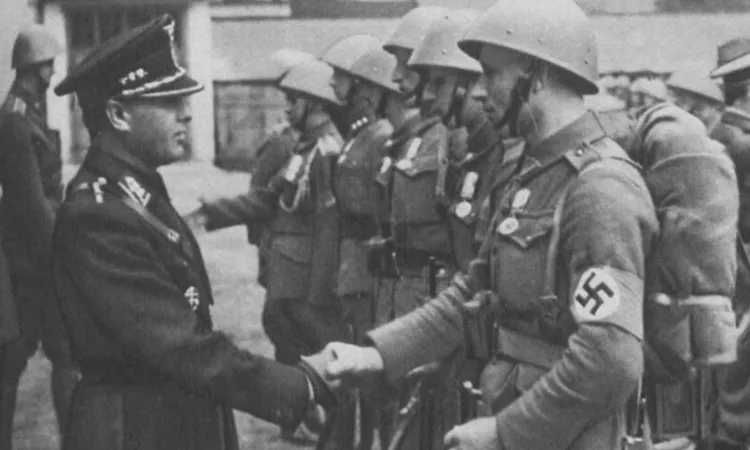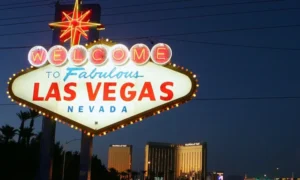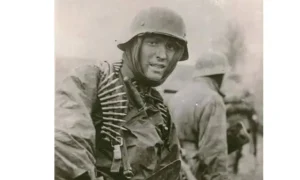Funny thing is, it didn’t kick off with some Hollywood bang. Nope. It started with the steady tramp of German boots plodding into Poland morning of September 1st, 1939. No Churchillian thunder. No sirens blaring worldwide. Just a bunch of soldiers crossing a border, and suddenly, the world’s on a path straight to hell.
Did Britain and France jump in? Yeah, after a couple days of awkward silence, they declared war. But honestly, by the time the dust settled, pretty much everyone was dragged into the mess. Inside of a year? The globe’s basically on fire.
World War II didn’t just redraw some lines on a map. It wrecked whole civilizations blew the idea of “normal” right out the window. The Holocaust. Nukes. New superpowers flexing for the next hundred years. But if you think it’s just “Hitler started it” and “America ended it with a big boom,” you’re missing like, 99% of the story.
This wasn’t some chess match between generals. It was chaos ideologies clashing, tech getting weirdly advanced, supply lines stretched to the edge, propaganda flooding every radio, and regular folks just trying not to get obliterated. And you know what? Seventy five plus years later, it’s still rattling around in our heads. In old stories, beat up relics, and let’s be real the lessons we like to say we’ve learned (but, eh, sometimes we just forget).
So yeah let’s walk through it. From that first shot to that weirdly quiet end in Tokyo Bay. And next time you see those battered helmets, dusty uniforms, or rows of medals in some museum? Don’t just see metal and fabric. That’s memory, baby. That’s the weight of everything that happened.
WWII Military Vehicles On Miltrade.com
What Sparked the Conflict? Causes and Allies
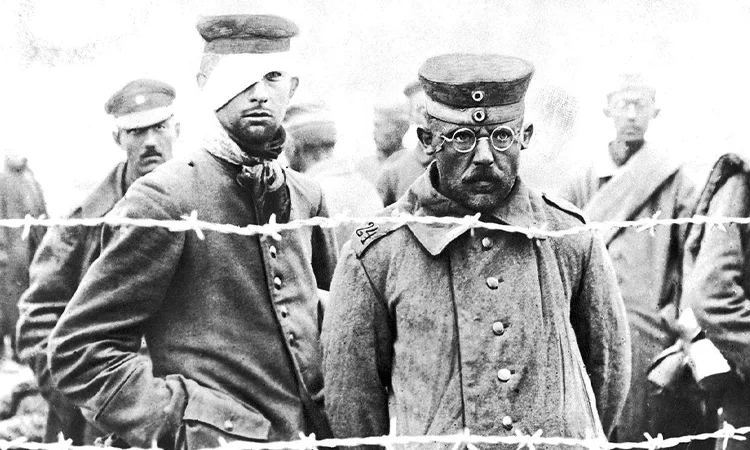
World War II didn’t just drop outta the sky one random morning. Nah, it was more like a pressure cooker that finally blew its lid after years of political screw ups, bruised egos, and a big ol’ mess left over from World War I. That Treaty of Versailles? It slapped Germany so hard financially, emotionally, the whole nine yards that the country was basically set up to explode. Then toss in the Great Depression, a bunch of angry extremists, and a dude with a tiny mustache yelling about restoring national glory. Boom. Disaster incoming.
By the time the 1930s rolled around, Hitler and his Nazi crew were running the show in Germany. The guy wasn’t exactly subtle he wanted more land, more power, and didn’t care who got steamrolled along the way. First, he sent troops back into the Rhineland (which he wasn’t supposed to do). Next, he just straight up annexed Austria, like it was the world’s easiest shopping trip. Then he started eyeing Czechoslovakia’s Sudetenland, and while he was grabbing chunks of Europe, Britain and France basically just crossed their fingers and hoped if they kept quiet, it’d all chill out. Spoiler: it didn’t.
All hell broke loose when Germany invaded Poland on September 1, 1939. Two days later, Britain and France went, “Yeah, no, we’re not letting this slide,” and declared war. Suddenly, the world split into teams:
You had the Axis Powers: Germany, Italy, Japan basically the bad guys in every war movie ever, all about grabbing land and flexing authoritarian muscles.
Then the Allies: started with Britain, France, and Poland, but the roster got a lot bigger when the USSR switched sides after Hitler stabbed them in the back, and the U.S. jumped in after Pearl Harbor. Talk about plot twists.
And this wasn’t just Europe’s problem. This was a worldwide mess. Battles everywhere on land, in the sky, at sea, even in factories and radio waves. Every corner of the globe got dragged in, like some nightmarish group project.
Funny thing is, when you look back now, it’s not just the big battles that tell the story. The gear helmets, uniforms, all that stuff left behind from those early days? Historians and collectors use it to stitch together the gritty, tangled beginnings of the war. It’s history you can actually hold in your hands, not just read about in some dusty old book.
Key Events Timeline 1939 to 1945
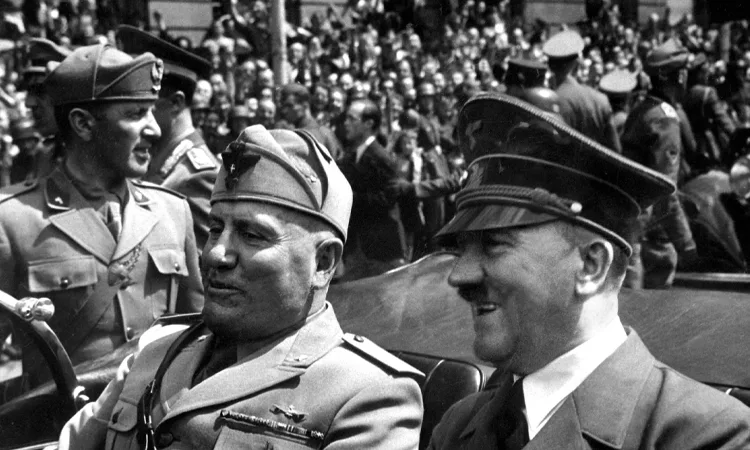
World War II wasn’t some neat, tidy line on a timeline. Nah, it zigzagged all over the damn place continents flipped, alliances backstabbed, and history got written in mud, sweat, and gunmetal. Let’s cut through the usual textbook snooze fest and look at the moments that really left scars – not just in leader speeches or battle plans, but in the gritty stuff: battered helmets, patched up uniforms, flags that saw actual bullets, that kind of thing.
1939: Kicking Off the Chaos
Sept 1: Boom, Germany storms into Poland.
Sept 3: Britain and France finally wake up and go, “Hey, that’s not cool,” and declare war.
Late ‘39: USSR’s like, “Don’t forget about me,” and jumps into eastern Poland and Finland.
Gear heads, take note: Early war Polish and German field gear from this mess? Still out there. Leather-strapped M35 helmets, old school Wehrmacht tunics collectors drool over this stuff.
1940: Blitzkrieg’s Wild Ride
April June: Germany’s on a hot streak Denmark, Norway, Belgium, the Netherlands, France. Blitzkrieg’s like a bad hangover for Europe.
June: Italy decides to join the party (late, as always).
July Oct: Battle of Britain kicks off, skies full of dogfights.
Relics? Oh yeah. Luftwaffe pilot goggles, battered RAF jackets, even French resistance armbands. People pay stupid money for these today.
1941: It Gets Real Global
June: Germany rolls dice on Operation Barbarossa, charging into the USSR.
Dec 7: Japan bombs Pearl Harbor surprise, America’s in.
Dec 11: Germany & Italy throw in against the USA.
This is when things go truly “world” war. Soviet winter gear, Japanese officer swords, American rookie-issue M1 helmets all started popping up, and collectors eat them up nowadays.
1942 1943: Axis Swings, Then Stumbles
1942: El Alamein, Guadalcanal, Stalingrad – things get spicy.
1943: Italy’s like, “Nope, I’m out,” after Allies land, but then Germany’s like, “I’ll handle it.”
From these deserts and ruins, North Africa tunics, Afrika Korps caps, and those weird Italian M33 helmets became the holy grail for museums.
1944: Allies Bring the Hammer
June 6: D Day, baby. Normandy goes wild.
Aug: Paris gets its groove back.
Sept Dec: Operation Market Garden, Battle of the Bulge it’s mayhem all over Europe.
American paratrooper uniforms, M43 field kits, German camo that looks like someone let a painter loose these all come from the bloodiest months.
1945: Game Over
April: Soviets crash Berlin’s party.
May 7–9: Germany throws in the towel VE Day.
Aug 6 & 9: Hiroshima and Nagasaki the world changes forever.
Sept 2: Japan signs off on the USS Missouri VJ Day.
The stuff from 1945? Surrender flags, helmets covered in signatures, relics with real stories. Heavy, right? These aren’t just museum pieces they’re ghosts with weight.
World War II at a Glance: From Blitzkrieg to Surrender
| Key Phase | Time Period | Notable Events |
|---|---|---|
| Outbreak of War | 1939 | Germany invades Poland; Britain & France declare war |
| Axis Expansion | 1940–1941 | Blitzkrieg, Battle of Britain, Pearl Harbor |
| Turning Points | 1942–1943 | Stalingrad, Midway, Italy flips sides |
| Allied Advance | 1944 | D-Day, liberation of France, Battle of the Bulge |
| War’s End | 1945 | Berlin falls, Hiroshima/Nagasaki, Japan surrenders |
Turning Points Why the Axis Lost
The Axis powers yeah, Germany, Italy, and Japan kicked things off with a bunch of flashy wins, but man, did they shoot themselves in the foot. It wasn’t just about losing battles; the whole vibe shifted. Momentum tanked, morale nosedived, and resources? Poof, gone.
Eastern Front Stalingrad (1942–43)
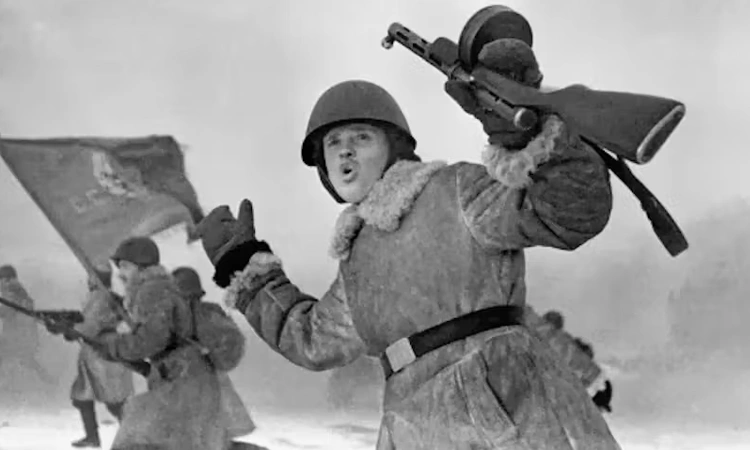
At first, the Germans were tearing through the Soviet Union like it was nothing. Then they hit Stalingrad. Cue: nightmare winter, waves of pissed off Russian troops, and Germans basically starving in their boots. Hitler’s 6th Army? Walked in 250,000 strong. Barely 100,000 limped out and most of those ended up POWs. First time Hitler really got smacked in the face, both mentally and on the battlefield.
Pacific Midway and Island Hopping
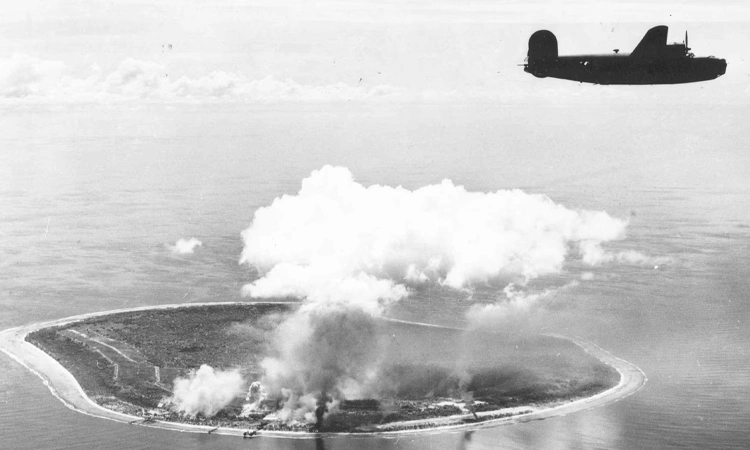
Midway, 1942: The U.S. Navy basically shreds Japan’s top ships, and suddenly the Pacific isn’t Japan’s playground anymore. After that, it was a slow, brutal crawl U.S. forces hopping from one tiny island to the next, choking off Japan’s lifelines. Not a good time to be on Team Axis out there.
The Axis Falls Apart Italy’s Disaster
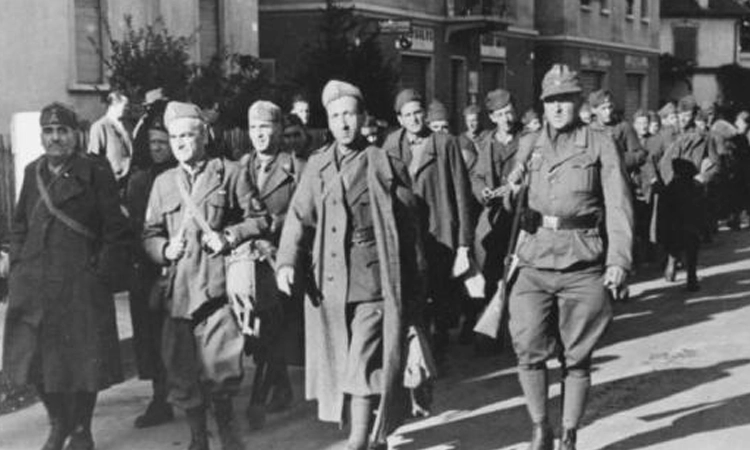
Fast forward to ’43. Allies storm Sicily, roll into Italy, and Mussolini goes down like a chump. Italy bails on the Axis and flips sides. Germany scrambles to pick up the slack, spreading themselves so thin you could see right through them.
D Day and the Nightmare Two Front War
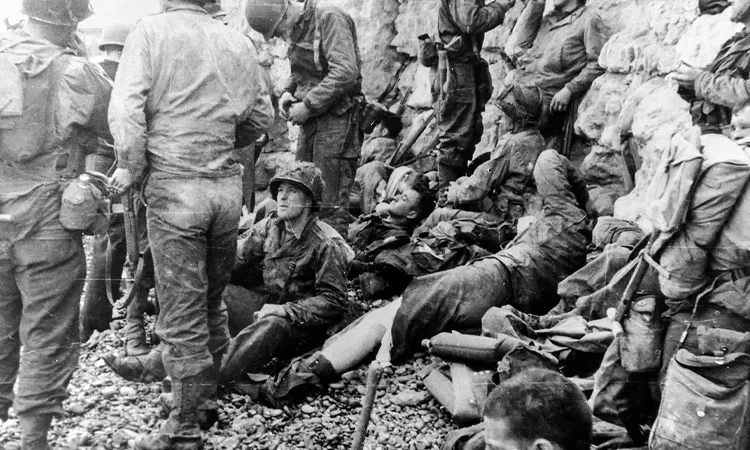
June 6, 1944 D Day. Biggest amphibious attack ever. Allies hit Normandy, hard. Meanwhile, the Soviets are charging in from the east. Germany’s stuck fighting everywhere at once. At that point? The writing’s on the wall. Just a countdown to surrender.
The End and What It Changed Forever
World War II didn’t just shuffle borders around it straight up flipped the script on how the world worked. When it finally wrapped up in ’45, yeah, there was relief, but also this massive “what now?” kind of vibe.
Germany? Sliced in half. East under the Soviets, West chilling with the Allies. Awkward family dinners, that’s for sure.
Japan got slammed with the only nukes ever dropped in anger. They tapped out, and honestly, who wouldn’t? After that, they ditched the samurai spirit and went full on pacifist.
The United Nations popped up sort of a “let’s not do this again, okay?” group chat for countries. Spoiler: we still fight, but hey, points for trying.
Oh, and the Cold War? That started before the ink dried on Germany’s surrender. U.S. and USSR went from besties to frenemies spying, arms races, the whole dramatic package.
Meanwhile, old school empires like Britain and France? They started losing their grip, and suddenly, countries everywhere wanted their own thing. Independence movements exploded.
But here’s the real kicker it’s not just politics and treaties. The scars are everywhere: broken buildings, silent cemeteries, and all these relics. Helmets with bullet holes, uniforms with stories stitched into every rip, scribbled notes from some muddy trench. That’s why history buffs and collectors get obsessed. It’s not just about the battles; it’s about the world flipping upside down and never quite landing back where it started.
Why Collectors Care Objects That Carry Memory
Honestly, if you’ve never held a WWII helmet, it’s probably just a chunk of metal to you. Same with those old uniforms just some scratchy fabric, right? But for people like me (and, let’s be real, a whole army of history nerds and collectors), it’s so much more. We’re talking about frozen stories snapshots of lives in the middle of chaos.
Think about it: WWII wasn’t just some big chess game with flags and leaders. It was millions of regular folks living through absolute madness. The gear they dragged around, the uniforms they sweated through, the stuff they ditched or lost sometimes, that’s all that’s left of them. A dented canteen with God knows what story. An armband with a bloodstain you can’t help but wonder about. Somebody’s name, barely legible, inside a jacket that’s seen more than any of us ever will. These things aren’t just “memorabilia,” man they’re scraps of people’s actual lives.
See, real collectors? They’re not just hoarding stuff in dusty basements. They’re basically time-traveling detectives. Is this stitching legit for ’43? That helmet liner stamp real or bogus? Which unit is that insignia from? It’s like CSI for history geeks, and when you finally crack the case and get your hands on something real, the rush is wild. You’re not reading about history. You’re literally holding it.
And that’s why the hunt never stops. People comb the globe for the good stuff original Wehrmacht tunics with the right kind of wear, American M1 helmets that might’ve hit the sand on D Day, Japanese swords with a family crest still etched on the hilt, Allied jump boots caked with what might just be the mud of Normandy. Every artifact has its own insane backstory, and every person who finds one keeps that story alive.
Where to Find Real WW2 Artifacts Your Trusted Source
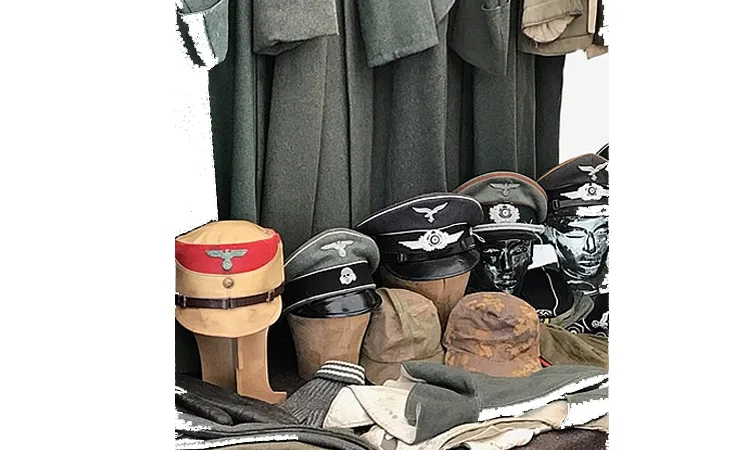
Alright, let’s get real about WWII collecting for a sec. Finding legit stuff? It’s a total minefield. There’s a massive difference between snagging a battered helmet that’s actually seen action and getting stuck with some shiny knockoff made last year in someone’s garage. But, like, how do you avoid getting played?
Honestly, the whole game’s about knowing where to look. You want German uniforms? Maybe an OG M1 helmet? Some gnarly Japanese blade? Don’t mess around on sketchy sites or random eBay listings stick with people and places that know their stuff. Miltrads’s not bad; they’re kinda like the bouncers of WWII collectibles no fakes get in the door. They actually back up their listings, which is huge these days.
So, where should you start poking around?
– Certified military dealers those old-timers who can smell a fake from a mile away.
– Big name auction houses. Pricey, yeah, but you get what you pay for.
– Memorabilia fairs or even museum sales. Sometimes they’ve got pros on hand to check your finds, and you might even learn something cool while you’re at it.
– And, yeah, online platforms like Miltrade. It’s not just eBay for history nerds these folks actually curate the stuff, so less chance you’ll get burned.
At the end of the day, buying from trustworthy spots isn’t just about flexing your collection. You’re literally hanging onto little pieces of history stuff that survived the chaos, stuff that has stories textbooks can’t touch. Every time you pick up an old uniform or a faded letter, you’re kinda time traveling, right? Beats reading about it in a dusty book, if you ask me.
Final Thoughts
Alright, let’s get real for a second World War II wasn’t just about tanks rolling across Europe or dogfights in the sky. It was a full blown upheaval that basically rewired the whole planet. Behind every battered helmet or faded patch, there’s some wild story of guts, heartbreak, or just plain survival. And yeah, those old uniforms and gear? Way more than just fabric and metal. They’re loaded with grit, pride, and the kind of sacrifice you just don’t see every day.
Ask any collector or history buff, and they’ll tell you: this stuff isn’t just “old junk.” Nah, it’s like holding a time machine in your hands. Every scratch or dent? That’s a memory, a whisper from someone who lived through stuff we mostly see in black and white photos. History doesn’t just sit on a shelf it gets passed down, felt, even argued over at family dinners.
That’s kinda the spirit behind Miltrade.com. It’s not just a marketplace; it’s a haven for folks who get why these objects matter. Maybe you’re hunting for something specific, maybe you’re selling that helmet your granddad kept in the attic, or maybe you just like to browse and geek out over cool history. Either way, authenticity’s the name of the game here. We’re all about keeping these stories legit so the next generation gets the real deal, not some knockoff nonsense.
End of the day, when you’re cradling a piece of the past, it’s not just metal or cloth. It’s a chunk of humanity’s wild ride messy, heroic, and unforgettable.
FAQs
How do collectors even trace authentic WWII gear back to specific campaigns?
I used to wonder the same, until I started matching helmet liners, battle scars, and stampings. You’d be amazed what you can learn from a dent or a faded-off name. Miltrade’s listings sometimes have that sort of information gear that tells its own story.
Why was D Day such a turning point for the Allied forces?
Because it was the period when the Allies stopped responding and started steamrolling. As a collector’s item? D Day gear is as close to mythical as makes no difference. I once received an ad for a paratrooper jump jacket from Milgtrade that still had sand in the seams. Unreal.
Is there really any distinction between early war and late war German gear?
Oh, definitely. Early war gear is neat, even elegant. Late war? Rushed off, rough, survival mode. When you’re holding a battered 1945 tunic, the change is tangible. Miltrade tends to show you both worlds side by side.
What sets WWII Pacific equipment apart?
Jungle rot, heat changes, and the occasional homemade flair. Japanese swords with mon crests, U.S. machetes with engraved initials Pacific gear’s raw. I once pulled a Japanese NCO sword out of Miltrade that gave off history almost literally.
Why is WWII still of interest to collectors over other wars?
Because it wasn’t tactics alone it was emotion, ideology, wholesale disruption. And you can feel that in the artifacts. Every field cap or dog tag is a whisper from the past. That’s why places like Miltrade matterbecause they’re not retailers; they’re keepers of memory.
